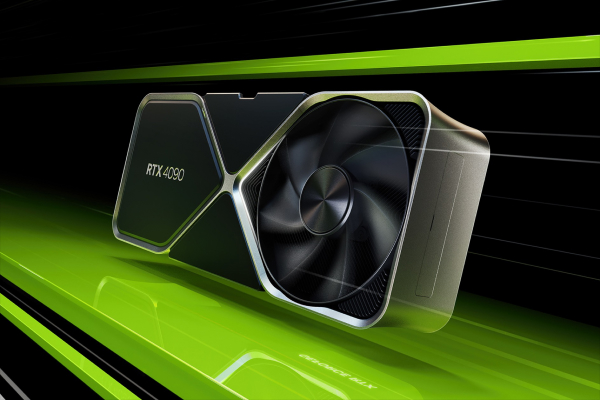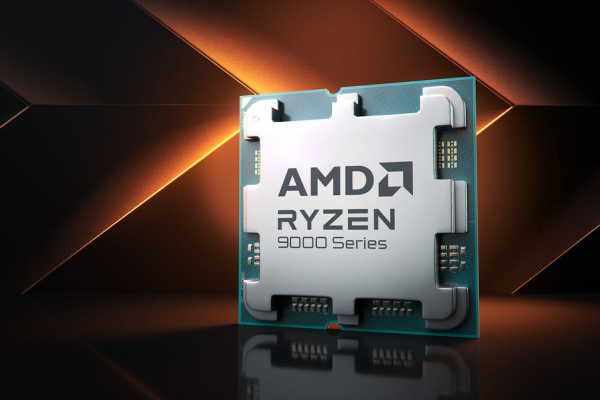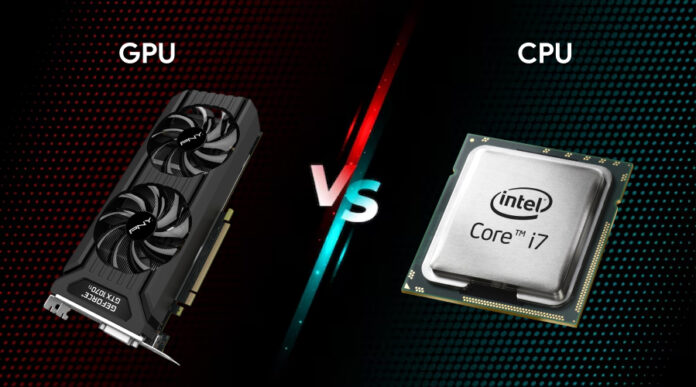In our digital world today, computers power everything from simple web surfing to complex AI systems. At the core of every computer, you’ll find two main processing units: the CPU (Central Processing Unit) and the GPU (Graphics Processing Unit). The processing units have separate duties even though they operate together. Your knowledge about their differences will enable you to select more suitable hardware components and maximize system performance.
What is a GPU?
The Graphics Processing Unit or GPU operates as a hardware component that makes operations on graphics and parallel data handling more efficient. GPU developers first created this technology for displaying images and videos on the screen. Modern GPUs serve as processors for enormous numerical calculations that AI applications and scientific modelling require most strongly.
The GPU architecture supports simultaneous task processing for thousands of operations that greatly enhances its efficiency in parallel applications.

Key Characteristics of a GPU
- Execute Thousands of Tasks Simultaneously: The core organization of GPUs operates through thousands of basic computing units, which work simultaneously.
- Deliver High Throughput: Processing power is their main priority, as it neglects individual task execution efficiency.
- Optimise for Graphics and Computation: The exceptional characteristics of GPUs allow them to deliver optimal results when rendering, simulations and processing artificial intelligence tasks.
- Use Dedicated VRAM: GPUs rapidly retrieve big data collections from their high-speed onboard memory system.
- Perform Advanced Math Operations: The ability of GPUs to execute floating-point operations efficiently supports 3D rendering tasks and neural networks.
Common Uses of a GPU
- Render Video Games: The GPU system adjusts and processes high-resolution textures, complex lighting effects and visual effects.
- Accelerate Video Editing: Fast video production is achievable because GPUs decrease the time needed for rendering.
- Speed Up Machine Learning: The processing speed of GPUs exceeds CPUs when operating on neural networks and large datasets.
- Enhance 3D Modelling: Creative software benefits from GPUs that enable you to get fast previews and final renders.
- Drive Scientific Computing: Graphics Processing Units enable the execution of mathematical operations during physical and biological taxonomic research, and environmental modelling simulations.
Also See: How to Choose the Best Snapdragon Processor for Your Smartphone
What is a CPU?
A CPU functions as the “Central Processing Unit” that performs the main logic operations of a computer system. The CPU has multiple functions that include executing commands, resource management duties, and controlling all system input and output operations.
The CPU performs best when executing tasks that demand rapid decision-making and frequent task changing. The CPU enables you to operate applications, control system file management functions and maintain operating system performance.

Key Characteristics of a CPU
- Contain Fewer but More Powerful Cores: The majority of CPUs work with between 2 to 16 highly capable cores to execute demanding operations.
- Operate at High Clock Speeds: The speed of completing single-threaded operations in CPUs is made possible by high-frequency cores.
- Utilize Multi-Level Cache Memory: The processing unit places data that needs frequent access into its different cache levels spread across L1, L2, and L3.
- Handle Sequential Processing Effectively: CPUs execute tasks sequentially with extreme accuracy, which makes them perfect for operations requiring high-level logical processing.
- Support a Wide Range of Applications: CPUs support all operations, including web browsing, email, code compilation and application execution.
Common Uses of a CPU
- Run Operating Systems: Central Processing Units operate both the operating system and fundamental system operations.
- Support Office Applications: CPUs drive the operation of spreadsheet programs, documentation applications and internet browsers.
- Compile Software: Developers depend on CPUs for designing and creating software code.
- Manage Game Logic: CPUs manage AI direction and game physics operations.
- Execute Background Tasks: CPUs execute commands to manage antiviruses, device updates and peripheral system control.
Also See: 30 FPS vs. 60 FPS for Phone Videos: What’s the Difference?
Key Difference Between CPU and GPU
| Feature | CPU | GPU |
|---|---|---|
| Primary Role | Perform general-purpose tasks | Do specialized parallel computations |
| Cores | 2–16 high-speed cores | Hundreds to thousands of smaller cores |
| Speed | High clock speed per core | Lower per core, higher overall throughput |
| Processing Style | Process tasks sequentially | Process tasks in parallel |
| Task Flexibility | Support a wide range of workloads | Optimize for data-intensive, repetitive workloads |
| Power Consumption | Use less power in most scenarios | Need more power, particularly under load |
| Best For | Run OS, logic tasks, and productivity software | Render graphics, process video, and train AI models |
| Cost (general) | Lower total cost | More, particularly for high-end variants |
| Memory Access | Share system RAM | Utilize dedicated VRAM |
CPU vs GPU: A Comparison
1. Task Specialization
The CPU (Central Processing Unit) is designed for general-purpose computing. The system contains versatile capabilities to execute diverse tasks, including operating system execution, web browser operation, file system administration and multi-tasking operations. A CPU delivers exceptional performance in single-threaded operations to complete linear processing requirements and instantaneous decision-making.
GPU (Graphics Processing Unit) serves as purpose-built specialized hardware which excels at executing numerous similar and parallelized computational activities. GPU functions best for game pixel rendering and massive data processing in machine learning, or creating intricate visual effects in video editing applications. The processing strength of GPUs becomes most apparent when data pieces can be split into multiple equal tasks that operate simultaneously as a set.
2. Performance and Speed
CPU performance gets evaluated through the clock speed (GHz) and IPC (Instructions Per Cycle). A CPU processes complex instructions at a single time based on its clock speed and ability to complete instructions per cycle. When a user launches applications or attempts task changes, the process mainly depends on CPU performance.
GPU performance evaluation includes measuring core count, memory bandwidth and TFLOPS, which stands for floating-point computing power. Multiplying large matrix data with GPUs leads to significantly better performance compared to CPUs.
3. Multitasking vs. Parallelism
CPUs are multitasking powerhouses. The system performs rapid task switching between applications, which results in a smooth user experience. A CPU controls multiple system operations, such as browser sessions and antivirus scans, at the same time by utilizing its intelligent processing sequence.
GPUs conduct thousands of simultaneous thread operations with the ability to deliver fast frame rendering in video games and machine learning calculations. The level of parallel processing that GPUs provide exceeds CPUs, but they lack CPU-level flexibility for handling multiple tasks simultaneously.
4. Hardware Dependency
Computer systems require a CPU as their essential component. Core system operations require this component at all times, regardless of GPU presence in the system. A functioning system requires an operational CPU to work.
A GPU serves optional needs that you can omit from your system. The built-in graphics technology that comes in Intel Iris Xe or AMD Radeon Vega CPUs provides enough power for typical day-to-day computing needs. To achieve high-performance needs like gaming, 3D rendering and AI, you require a dedicated GPU.
5. Scalability
CPU performance increases when adding cores or threads until it reaches maximum efficiency boundaries. An upgrade from a quad-core to an octa-core CPU will improve performance in multi-threaded applications, but won’t help much in single-threaded tasks.
GPUs scale horizontally and vertically. You can achieve faster rendering and machine learning through multi-GPU configurations that use either SLI or NVLink setups.
6. Software Optimization
All software programs currently support CPU operations. Your operating system, office software tools and web browsers receive dedicated CPU performance optimization.
For GPUs to function properly, you need software that supports the GPU architecture and software optimization. Applications like Adobe Premiere Pro, Blender, TensorFlow and PyTorch have built-in GPU acceleration capabilities, but not every program has these performance enhancements.
Which Should You Use?
There’s no need to pick between a CPU and a GPU. It’s better to know when to use each one. Your CPU is still key for day-to-day computer work, running your operating system and programs. Your GPU shines in specific jobs like gaming, creating graphics, and AI work.
Conclusion
CPU and GPU functions independently within a computer computing system. A CPU efficiently handles general tasks, including application operation and system administration. Graphics Processing Units excel at parallel processing of various tasks such as video games, professional video editing and AI applications. Computers use both CPUs and GPUs to function optimally, although one model might perform better than the other based on your specific requirements.

